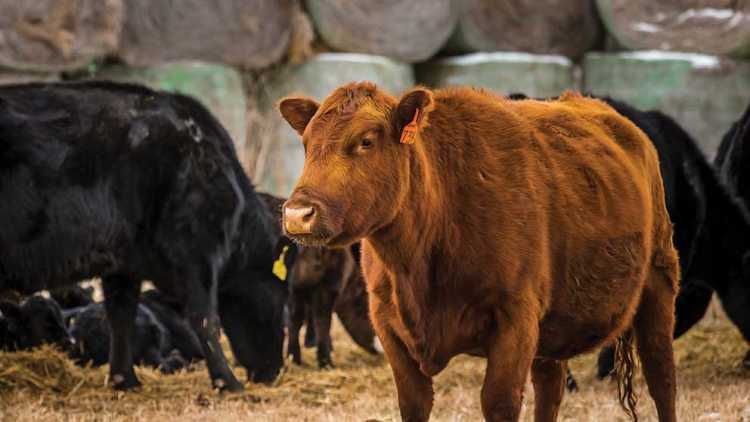COVID-19 impacts on the Canadian cattle and hog supply chains

Over the next several weeks, FCC Economics will help you understand the rapidly evolving business environment due to COVID-19. With the costs to families continuing to climb and potentially unprecedented associated economic costs, central banks around the world are now working together to find ways to halt the damage.
We’re updating our 2020 Red Meat Outlook to reflect changes now shaping the cattle and hog sectors. As of March 24, we expect average cattle and hog prices throughout 2020 to largely stabilize close to average 2019 prices. However, their drop relative to the 5-year average highlights the plight currently plaguing the sector (Table 1).
Alberta fed steers are now trending towards an average of $152/cwt for 2020, Ontario fed steers, $146/cwt. That represents a 2% drop in average prices in 2020 for Alberta cattle and 1.4% decline in Ontario cattle since our Outlook last month.
The cattle price trends are amplified for hogs. Our price trends indicate Ontario feeder hogs will average $132/cwt this year, a 6.8% drop since our February report, while market hog annual prices are now expected to average $79/cwt, a 5.0% drop.
Table 1. Livestock average price in 2020 trends lower than 5-year average, but still in line with 2019 average

Sources: Statistics Canada, USDA, CanFax, CME Futures and FCC calculations.
The decline in fed cattle and hog cash prices and futures have fallen in large part due to disruptions in demand/supply fundamentals within the supply chain.
Supply and demand trends impact pricing in Canada’s red meat sectors
1. Ample supplies expected throughout 2020
The latest WASDE forecasts 2% growth in U.S. year-over-year (YoY) beef production for 2020. Pork production is expected to climb 4.9% YoY. Since the pandemic broke, Canadian beef production has ramped up, both to meet current demand and to stock meat supplies in anticipation of a possible production slow-down.
Strong U.S. packer margins are driving production growth to unusual highs so far in 2020.
Current market dynamics may do little to reduce large North America protein supplies. The USDA forecasts stable YoY U.S. ending stocks of red meat in 2020.
Processing plants are currently reviewing their production practices to protect the health of their employees and minimize disruptions in production.
The Canada-U.S. border remains open. However, continued movement of livestock, meat and workers could be hampered throughout the pandemic. We’ll know more in the weeks ahead about possible labour shortages producing bottlenecks in transportation and delivery or disrupting production.
2. Uncertain global and domestic red meat demand
Global demand for pork will be key in absorbing large supplies and supporting prices for Canadian hog farmers. It’s likely to be highly unstable, at least in the short-term.
A 2020 global recession will limit consumer spending on red meat. Trade will add to such bearish influences should worldwide transport and delivery face disruptions or slowdowns.
A possible bright spot: China’s pork demand remains strong with reduced Chinese production due to African Swine Flu and a population recovering from COVID-19. They’ve committed to buy more U.S. pork. And the Chinese economy is beginning a slow economic rebound now that COVID-19 cases seem to have stabilized.
North American worries about the pandemic initially spurred higher red meat consumption. With more families dining at home, demand rose for boxed beef but fell from the more lucrative food service sectors. The move to increase take-out and delivery options may help recover lost revenues. But Canadian meat consumption relies most on stable household income, which is now severely strained.
Executive Vice President, Strategy and Impact and Chief Economist
J.P. Gervais is Executive Vice President, Strategy and Impact and Chief Economist at FCC. His insights help guide FCC strategy, monitor risks and identify opportunities in the economic environment. In addition to acting as an FCC spokesperson on economic matters, J.P. provides commentary on the agriculture and food industry through videos and the FCC Economics blog.
Prior to joining FCC in 2010, J.P. was a professor of agricultural economics at North Carolina State University and Laval University. J.P. is a Fellow of the Canadian Agricultural Economics Society. He obtained his PhD in economics from Iowa State University in 1999.
